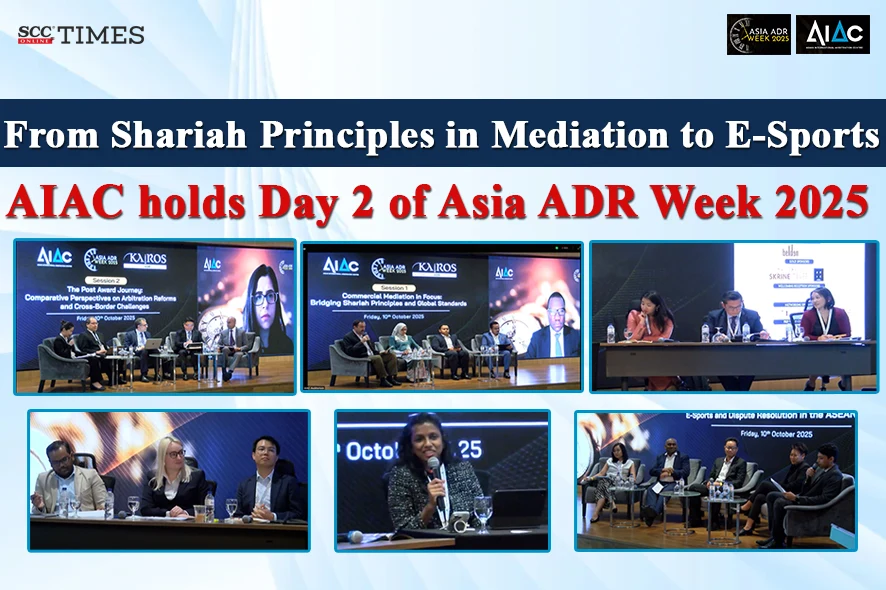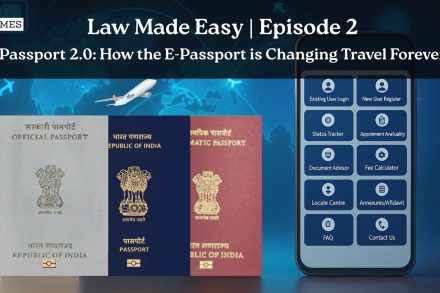The Asian International Arbitration Centre (AIAC) successfully hosted day two of the Asia ADR Week 2025, a three-day international conference on the theme, “Kairos: Seizing the ADR Moment”, encapsulating the urgency and opportunity in transforming the future of dispute resolution.
Session 1| Commercial Mediation in Focus: Bridging Shariah Principles and Global Standards
This session brought together mediators, in-house counsel, Shariah scholars, and Islamic finance practitioners to discuss the growing role of mediation in resolving Islamic finance and commercial transactions-related disputes. The panel discussed the complexities of cross-border disputes and explored the ways to institutionalize mediation frameworks that uphold Shariah integrity while meeting international standards and commercial expectations. This session also aimed to foster a holistic dialogue on the best practices as well as collaborative approaches to promote mediation as a credible, Shariah-compliant dispute resolution pathway for both the regional and global Halal industry.
Moderated by Dr. Adnan Trakic, Associate Professor/ Head of Department, Monash University, the erudite panel comprised of Mr. Mohamad Redzuan Idrus, Partner, Azmi & Associates Partner; Mr. Nan Muhammad Ridhwan Rosnan, Partner, ZUL RAFIQUE & partners; Ms. Sharifah Shafika binti Syed, Partner, Skrine; and Dr. Umar Oseni Abbas Alsagoff, Secretary General, Organisation of Islamic Cooperation Arbitration Centre (OIC-AC).
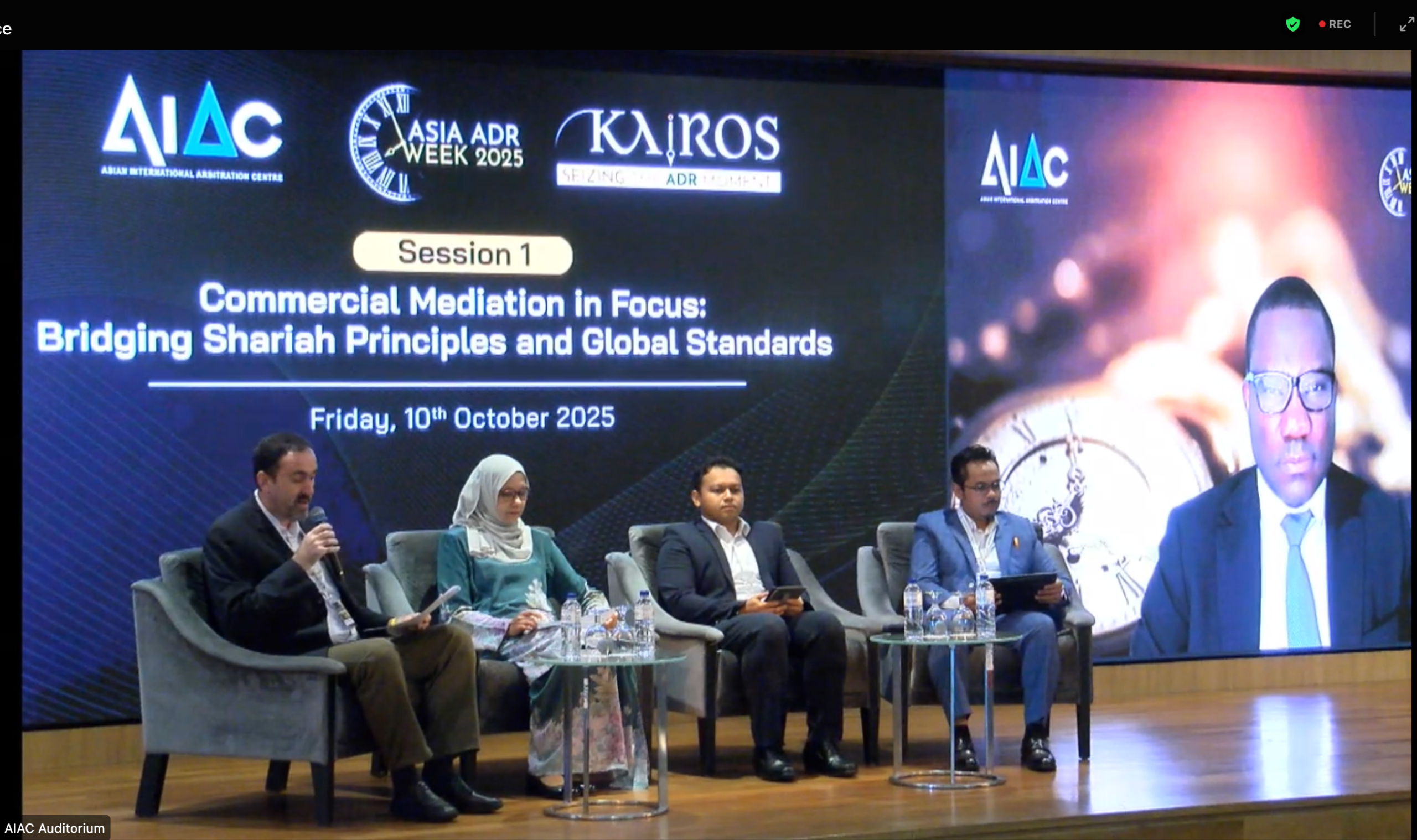
Introducing the session, Dr. Adnan Trakic spoke about the significant global developments in mediation over the years, particularly with the enactment of the Singapore Convention on Mediation. While Malaysia has not yet become a party to the convention, he stated that the country has robust domestic frameworks, such as the AIAC Mediation Rules, 2023, which are flexible enough to accommodate disputes arising in the context of Islamic finance. At the same time, institutions like the OIC Arbitration Center are developing platforms for dispute resolutions that respect Shariah norms, while promoting cross-border enforceability among OIC member states.
Speaking on how principles of Shariah align with modern commercial mediation practices, Dr. Umar Oseni Abbas Alsagoff stated that Sulh in Islam was the model of mediation and negotiation, which is why modern mediation prefers to use the word ‘Sulh’. He added that Sulh was a divinely encouraged act, not just a legal tool.
Underscoring the importance of fairness in mediation, Dr. Alsagoff stated that Sulh was the moral aspect of mediation, while the modern mediation rules were the legal aspect of it. He stated that this moral aspect was important for the ultimate settlement between the parties.
“Mediation in Islam certainly goes beyond the pure legal framework.”
– Dr. Adnan Trakic
Taking the floor from Dr. Alsagoff, Ms. Sharifah Shafika binti Syed delved into the compatibility of mediation in Islamic law with conventional frameworks, rules, and practices of mediation. At the outset, she stated that neutrality of the third party was common in both types of mediation and formed the core of the mechanism. But there were differences in the foundational sources, ethical considerations, and the duties of the mediator in the two models. For example, the foundational difference was that conventional mediation, derived from Western legal systems, emphasizing common law principles and party autonomy. However, Islamic mediation was based on the Quran and Sunnah, the prophetic tradition, emphasizing peace, reconciliation, and justice.
Ms. Syed further elaborated that the core objectives too were different for both systems; while conventional mediation aimed to reach a mutually acceptable and voluntary settlement, Islamic mediation aimed to achieve a just and equitable resolution, guided by Islamic values. The mediator’s role, too, was slightly different, as in the conventional system, the mediator had to facilitate and resolve, whereas in the Islamic system, the mediator must also ensure that the settlement was in accordance with Shariah law.
Regarding the apprehensions around opting for mediation in Islamic financial disputes, Mr. Nan Muhammad Ridhwan Rosnan stated that the first issue was that people thought that the party that proposes to go for mediation is implying that they have a weakness. To counter this problem, he suggested portraying mediation as a cost-effective, pragmatic, fast, and win-win solution for both parties, unlike litigation. Lawyers can propose to have a multi-tiered dispute resolution clause in contracts, which makes it compulsory for parties to go for mediation as a pre-agreed procedural step before opting for arbitration or litigation.
The second hesitation, in his opinion, was that parties doubted the legal weightage of the mediation settlement, although a signed agreement, in Malaysia, was a legally binding contract and had the same legal weightage as a court order. The last issue was that parties are using it as a delay tactic, i.e., technically trying to figure out the strengths and weaknesses of their opponent’s case. Mr. Rosnan expressed that in such a case, the mediator could set boundaries for what information the parties can provide and how to keep them focused on resolution. Further, the parties can be reminded that anything said or shared during mediation cannot be used in court, a cornerstone of the mediation process.
Moving on to the last speaker, Mr. Mohamad Redzuan Idrus, discussed the practicality of ensuring the enforcement of a mediation settlement agreement. He stated that there were many elements of ensuring enforceability; it had to be in writing, aligned with the Shariah principles, include the arbitration clause, incorporate he consent judgment, specify the governing law and jurisdiction, and it must be enforceable.
The panel then delved into erudite discourses on converting the settlement agreement into an arbitral award, mediation-arbitration, the process of converting a mediation settlement agreement into a consent judgment, Shariah compliance of the settlement agreement, dealing with the schools of Islam and different interpretations while drafting agreements and enforcing settlements, and much more.
Session 2| The Post Award Journey: Comparative Perspectives on Arbitration Reforms and Cross-Border Challenges
Enforcing arbitral awards often presents various challenges, primarily stemming from potential flaws in the arbitration process or the enforceability of the award itself. Legislative amendments on the arbitration framework thus become crucial for several reasons, among others, to ensure the laws stay relevant to evolving business practices, technological advancements, and international legal norms as we continue to foster greater trust and confidence in the system. This session guided the readers through the global legislative movements and arbitration-targeted reforms towards harnessing recognition and enforcement of arbitral awards and addressing other practical challenges in the arbitration landscape.
Moderated by Ms. Heather Yee, Assistant Director, AIAC, the session was graced by exemplary panellists namely, Mr. Andrew Chiew Ean Vooi, Partner, Lee Hishammuddin Allen & Gledhill; Mr. Aoi Inoue, Partner, Anderson Mori & Tomotsune; Ms. Khushboo Shahdadpuri, Partner, Al Tamimi & Company; Mr. Simon Davis, Barrister, Francis Burt Chambers; and Mr. Vinayak Sri Ram, Partner, Rosli Dahlan Saravana Partnership.
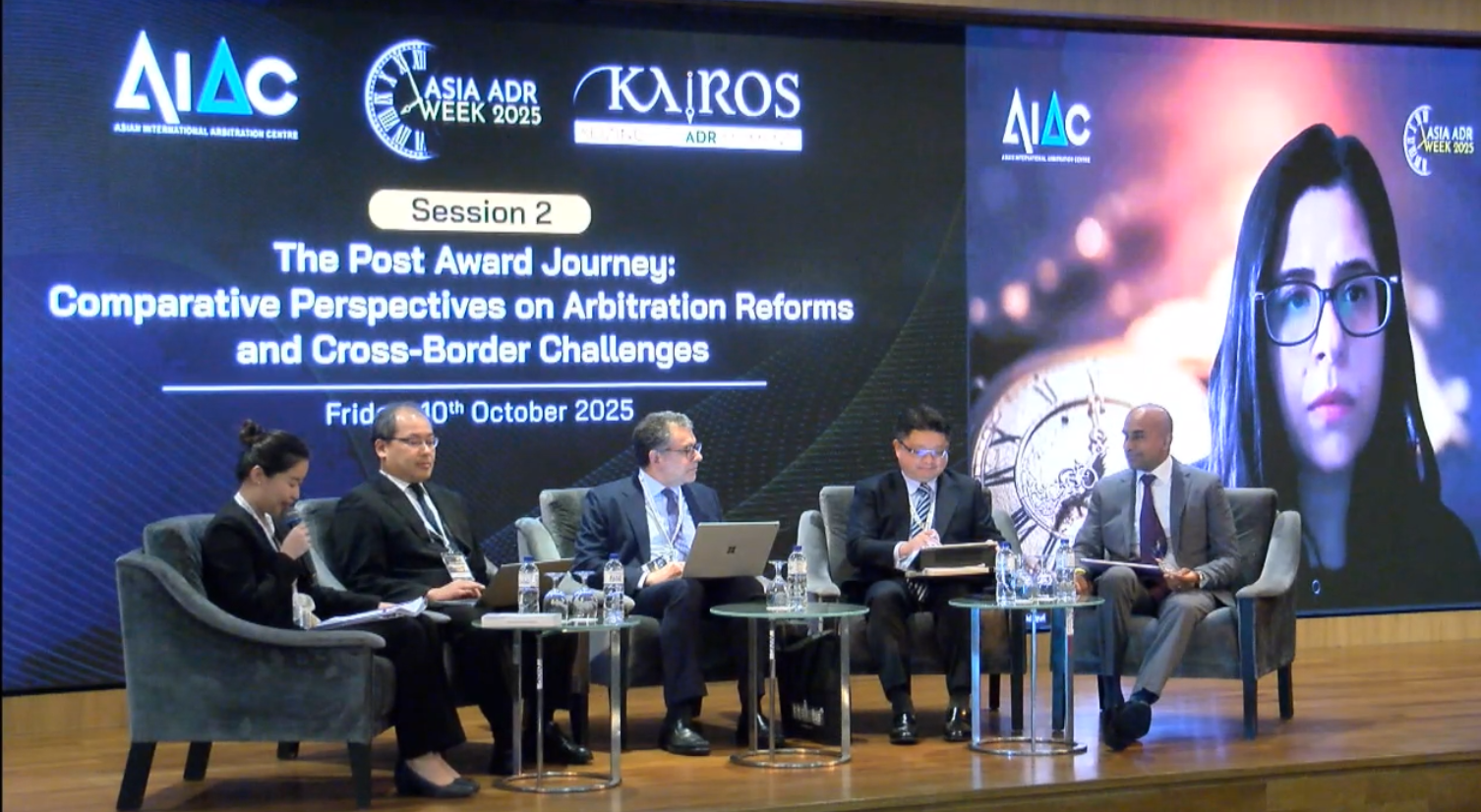
Kickstarting the session with a brief introduction of the topic and the panellists, Ms. Heather Yee opened the floor for Mr. Aoi Inoue to speak about the challenges or issues that remain in the enforcement practice of arbitral awards in Japan.
Mr. Inoue began with a brief overview of the recent developments in Japan’s arbitration landscape, with the Japanese Arbitration Act being enacted in 2003 based on the UNCITRAL Model Law, 1995, and then it was amended in 2023, thereby bringing into force the new 2024 Act. Regarding the 2024 Act, he discussed two significant developments, namely the relaxation of the strict Japanese translation requirement and revision of jurisdictional rules to improve how Japanese courts handle arbitration-related cases, i.e., the Tokyo District Court and the Osaka District Court have so-called concurrent jurisdiction over all arbitration-related Court cases. He elaborated that now arbitration cases are assigned to a special commercial division, for which both the district courts have been restructured internally.
“This administrative step has further enhanced judicial expertise and promoted consistency in decision-making. So, we can now expect more stable decisions by judges with more experience and expertise.”
– Mr. Aoi Inoue
Mr. Inoue also underscored the pro-arbitration stance of the Japanese Courts in arbitration-related cases, which was evident in the recognition and enforcement of foreign arbitral awards. In this regard, he mentioned a landmark judgment by the Tokyo High Court wherein the Court stated that when interpreting the Japanese Arbitration Act, the Courts should aim for interpretations that are consistent with the arbitration laws of other jurisdictions, and such interpretations should be acceptable under international standards.
“The recent reforms mentioned earlier will further enhance practical convenience for arbitration users worldwide, while also enabling the accumulation of even higher quality decisions in the context of enforcing arbitral awards in Japan.”
– Mr. Aoi Inoue
From the Australian perspective on the translation waiver, Mr. Simon Davis informed that if the award was being enforced in an Australian Court, it must be translated into English. Ms. Yee added that in Malaysia as well, the award needed a translated copy in Malay.
For the UAE, Ms. Khushboo Shahdadpuri stated that since the UAE had conjugal jurisdiction, wherein International Financial Law Centre Courts operated in common law and English, but the onshore civil law jurisdiction required everything to be translated into Arabic.
Considering the recent amendments in the Malaysian Arbitration Act, Ms. Yee asked Mr. Vinayak Sri Ram about what practical issues would continue to arise regarding the recognition and enforcement of foreign arbitral awards in Malaysia.
Mr. Ram opined that in the last few years, Malaysia has had a series of decisions which made the position of the Courts unclear, whether the Courts are going to be very hands-off or whether they will intervene in certain circumstances. In the domestic context, Section 42, which had provided for a certain level of review by the Courts, was repealed due to a judgment that vastly expanded its scope. He remarked that it was yet to be seen the ways in which the Malaysian Courts do or do not get involved in curial and supervisory roles when it comes to the enforcement of arbitration awards.
Taking the discussion further, Mr. Andrew Chiew Ean Vooi spoke about the approach of the Malaysian Courts and the limits of their inherent jurisdiction in dealing with enforcement. He stated that enforcement was predictable as the Courts followed the model law in a straitjacket manner, i.e., a strict interpretation that was inconsistent with other jurisdictions to a certain degree. He also referred to a few landmark cases in Malaysia in this regard.
Thereafter, Ms. Shahdadpuri explored the issues of enhancement in the extent of Court interventions and the recent amendments in the UAE. At the outset, she remarked that the UAE had an atypical jurisdiction. On one hand, they had Dubai International Financial Center Courts, which are entirely based on common law concepts, like Singapore, Malaysia, and the like of such countries. On the other hand, they had onshore courts which were based on civil law concepts and used Arabic.
Ms. Shahadpuri added that under this civil law, arbitration is an exception; hence, the concept of consent to arbitration becomes a sensitive issue. In practice, the person from the company who signs off on the arbitration clause must have the authority to resolve, and in the last decade, there have been very technical challenges to arbitration awards in the Courts on the authority to sign the arbitration clause.
The first development in the UAE’s system was regarding the issue of money. She explained that the UAE had alternative jurisdictions wherein parties could opt for either offshore or onshore jurisdiction. However, this had been streamlined so parties had to now go to the Courts, i.e., the seat of arbitration, to attain some application or order and then use that order to make other choices.
The second development, she elaborated, was the abolishment of the DIFC-LCIA Arbitration Centre because of the changes in the law, and the Dubai International Arbitration Centre was established in its place.
Enlightening the audience about the recent developments in the Australian jurisdiction, Mr. Davis spoke about the state and federal statutes for arbitration, which were largely uniform and based on the UNCITRAL Model Law. He added that though Australian Courts had an enforcement mechanism like other model law jurisdictions, i.e., registering a foreign award, recent reforms in the Australian regime created a different stance about confidentiality. The Australian statutes stated that arbitration was not inherently confidential, but it was regularized to say that it was confidential unless parties agreed otherwise.
Further, Mr. Davis delved into a few cases in the country, such as CBI Constructors Pty Ltd v Chevron Australia Pty Ltd1, to discuss the bifurcation of the proceedings and the concept of the arbitrator becoming functus officio.
Thereafter, the panel delved into the challenge based on consent of the signatory in Malaysian and Japanese jurisdictions, the post-award process in all the jurisdictions of the panellists, and the reciprocal enforcement of judgments in Malaysia.
Plenary Address
After the enlightening session 2, Mr. Raja Singham delivered an erudite plenary address on “Nurturing Tomorrow’s Talent: Mainstreaming ADR into Legal and Business Education”.
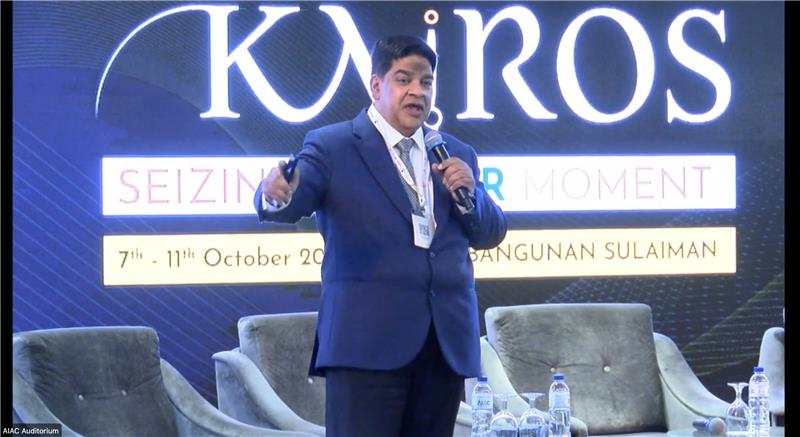
Session 3| Game On, But Who Decides the Rules: E-Sports and Dispute Resolution in the ASEAN Region
E-sports in Malaysia has seen significant growth, gradually emerging as a major sector within the country’s entertainment and digital economy. With the Malaysian government’s support and statutory recognition of e-sports as a legitimate industry, the e-sports market in Malaysia is projected to be worth USD 347 million, with promising potential to catalyse substantial investments and initiatives that foster its continuous development. Leveraging comparable growth among the ASEAN member states, the panel discussed the nature of disputes in e-sports, the existing dispute resolution framework, and the role ADR can play in resolving such disputes within ASEAN.
Moderated by Mr. Vishnu Menon, International Case Counsel, AIAC, the panel comprised of luminaries namely, Mr. Eugene Low, Partner and Head of E-Sport, Hogan Lovells; Ms. Lesley Lim, Partner, MahWengKwai & Associates; Ms. Lilien Wong, Partner, Shearn Delamore & Co.; and Mr. Sri Sarguna Raj, Head of Intellectual Property, Tech, Media, Sports and Gaming, Adnan Sundra & Low.
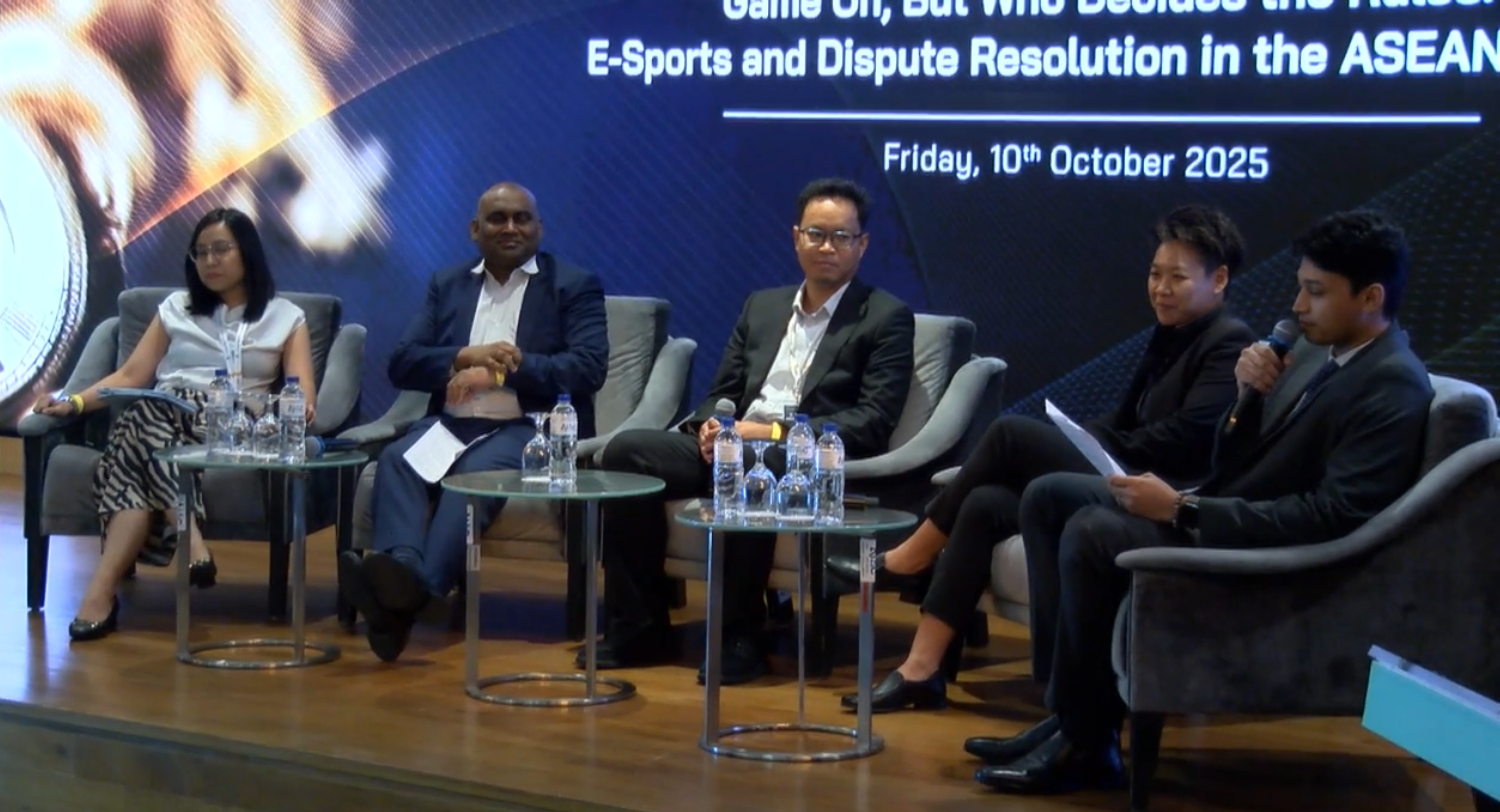
Mr. Vishnu Menon kick-started the session by enlightening the audience on the booming industry of E-Sports, which has a complex network of stakeholders, including publishers, developers, tournament organizers, players, etc. Inevitably, with competing interests, there were disputes such as unpaid salaries, prize money fights, match fixing scandals, wrongful bans, and much more.
“The global E-Sports market was worth about USD 2.2 billion in 2024 and is expected to reach USD 7.5 billion by 2030.”
– Mr. Vishnu Menon
Thereafter, he invited Ms. Lesley Lim to explain the meaning of E-Sports and its essential elements. She stated that it was simply electronic sports played on computers, consoles, and mobiles with the essential definitive elements of competitiveness and multiplayer mode.
Adding to the discussion, Ms. Lilien Wong spoke about whether esports are also sports. She explained the commonality between the two by illustrating how mobile and console football competitions were taking place internationally, like the usual international sports tournaments. She differentiated between the two by stating that E-Sports was more accessible and required different physical and mental skills.
Highlighting the attempts undertaken for global oversight of the industry, Mr. Menon posed a question to Mr. Eugene Low about whether there were international federations or governing bodies that truly regulated E-Sports, or whether the field was still too fragmented.
Mr. Low responded that, though there was no singular governing body, there were emerging key players both globally and regionally, such as the International Olympic Committee, which will hold E-Sports Olympics in 2027, the International E-Sports Federation, the Global E-Sports Federation, and the E-Sports Integrity Commission. Although these key players were attempting to create a complete ecosystem, they operated independently, and there were inconsistencies between their rules and practices.
Regarding the recognition of E-Sports as sports in Malaysia, Mr. Sri Sarguna Raj stated that the amendment to the Sports Development Act opened a lot of opportunities for developing esports and investments. Thereafter, the National E-Sports Guidelines, i.e., NESDEG, were introduced, which streamlined many legal aspects. It has six pillars, namely, player contracts, governance of events, child protection, ethics, career pathways, and sport signs. He opined that these guidelines were beneficial as an esports player or body could get a model contract template from the guidelines and become aware of their rights.
Speaking from the South Korean and Chinese perspectives in this regard, Ms. Lim underscored that these two countries had been supporting the industry from a very early stage. They attempted to boost the industry by enacting legislation or forming a governing body. For example, China recognized E-Sports in 2003, whereas Korea formed the Korea E-Sports Association in 2000. She added that there were several other countries that joined the trend early, like the USA, Finland, Germany, Ukraine, and Thailand. Ms. Lim also mentioned that there were countries that were not successful in joining the industry, such as Mexico, which faltered in many aspects, such as their anti-doping legislation.
Mr. Menon furthered the discussion by inquiring about Hong Kong’s recent paper on Sports Disputes Resolution from Mr. Low. Mr. Low explained that the paper concerned was a general brief to the Legislative Council to explore the need for Hong Kong to develop a sports-related dispute resolution system and Hong Kong’s potential for doing that. It does not mention E-Sports specifically or any other particular sports. He opined that there was no reason why E-Sports would be excluded because Hong Kong’s E-Sports association is recognized under the Hong Kong Olympic Sports Association, thus E-Sports should be included.
On the topic of the common types of E-Sports disputes, Ms. Wong explained that the most common ones were contractual disputes between players, sponsors, and teams, intellectual property disputes like licensing trademark and copyrights, regulatory issues disputes such as competition law, exclusivity and personal data, match-fixing or cheating disputes, player misconduct or disciplinary disputes, transfer disputes, advertisement disputes, sponsorship disputes, and ownership disputes.
Thereafter, the panel engrossed the attendees with discussions on stakeholders in the E-Sports ecosystem, ad-hoc dispute resolution systems for E-Sports, how existing ADR institutions, such as AIAC, are equipped to deal with E-Sports disputes, the ADR mechanism that can be used in such disputes, etc.
Lastly, the panel discussion ended with a lighthearted rapid-fire round with the audience.
Session 4| Debates
(Debate 1) Double-Hatting in International Arbitration: Is It About Money?
The practice of “double-hatting” is where legal professionals act as both arbitrators and counsel in different cases, which often sparks intense debate within the international arbitration community. One may favourably argue that it fosters expertise, efficiency, and perspectives, while critics, on the other hand, express concerns about conflicts of interest that undermine the legitimacy of the arbitral processes.
Kickstarting the debates, Ms. Vatsala Ratnasabapathy, Senior Partner, Zain & Co, (moderator) introduced the panellists and explained the rules for the debates.
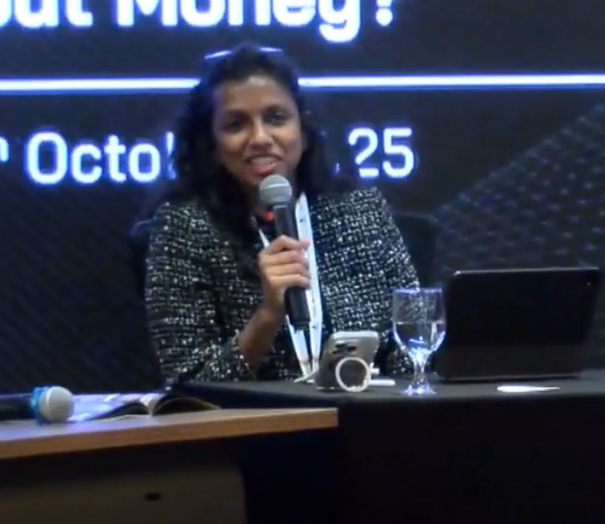
Speaking for the motion, House A believed that double-hatting compromises impartiality and credibility; it is therefore driven by financial incentives, not fairness. House A comprised erudite practitioners, namely, Mr. Adrian See Jooi Hong, Managing Partner, Belden; Ms. Janice Tay, Partner, Wong & Partners; and Mr. Kalaiarasan Rasadurai, Senior Associate, Skrine.
House A eloquently argued that double hatting was based on financial interests, it compromised impartiality of the proceedings, it had great risks and consequences, created difficulty in finding a suitable arbitrator due to a small pool, created significant chances of conflicts of interest, and had the possibility of an arbitrator getting influenced by his counsel role in other cases.
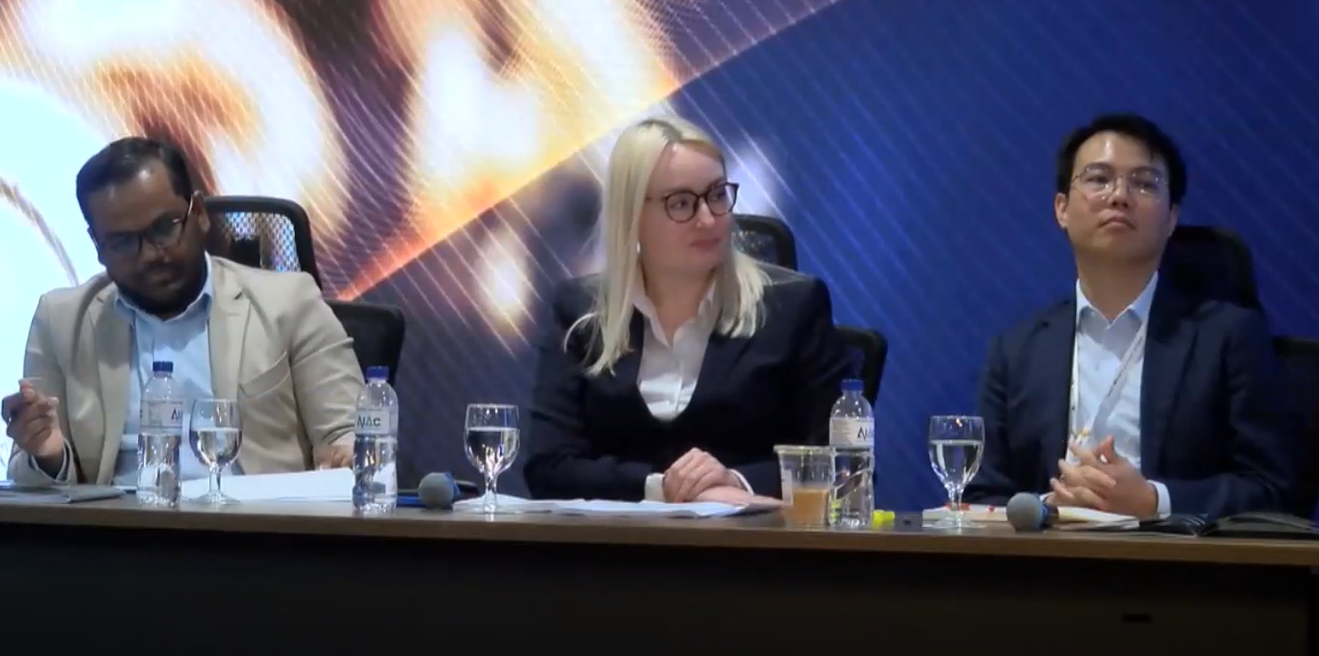
House B believed that double-hatting enhances experience and perspectives; it is about honing professional skills, not economics. This House comprised of luminaries, namely, Mr. Lam Ko Luen, Head of Arbitration and Partner, Shook Lin & Book; Ms. Tatiana Polevshchikova, Counsel, Dyakin, Gortsunyan and Partners; and Ms. Vee Vian Thien, Senior Associate, Withers.
House B convincingly argued that double-hatting enhanced efficiency, expertise, and perspectives of an arbitrator, aided professional development, and provided the foundation for an arbitrator. They contended that clients wanted double hatting as they continue to upskill themselves, disclosures allowed parties to consent to double hatting arbitrators, double hatting allowing newcomers to be equipped with expertise and skills, and clients lacked trust in an arbitrator who hasn’t been a counsel.
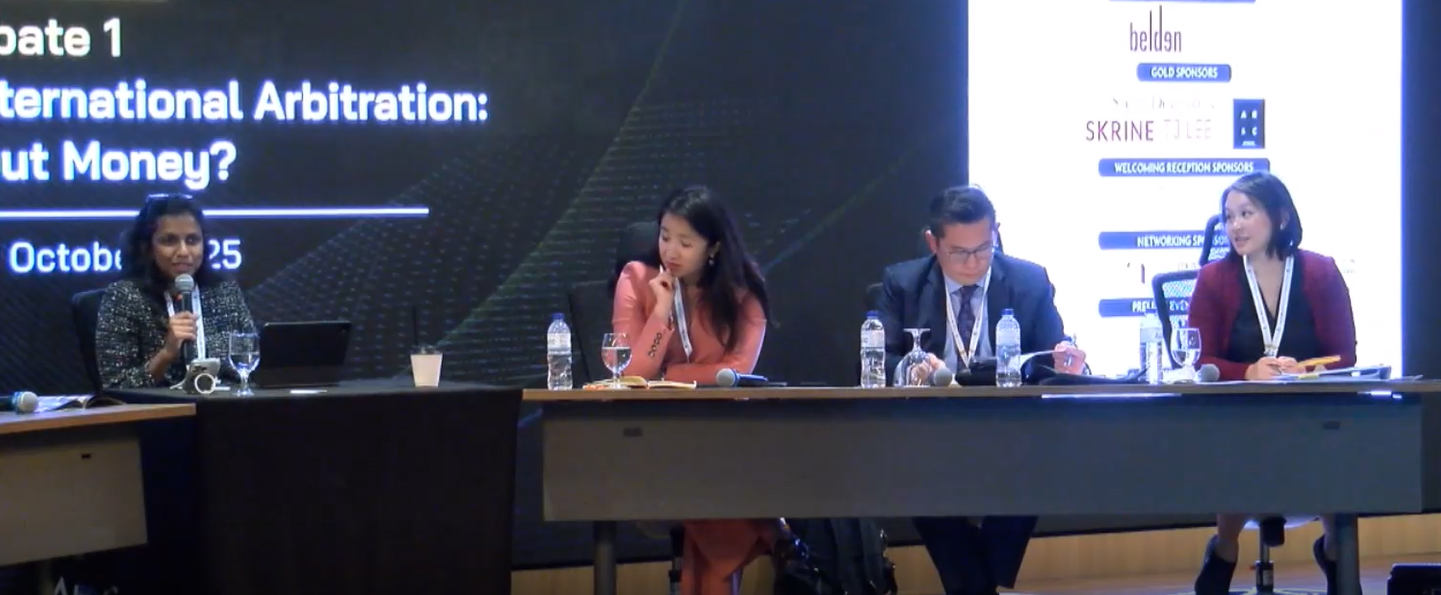
(Debate 2) Disclose or Be Disqualified: Where is the Line?
With the growing demand for transparency and accountability in international arbitration, arbitrators now face increasing pressure to disclose past appointments, professional connections, and even indirect relationships. Failure to do so often risks disqualification, challenges to awards, and, to a certain extent, reputational damage. This debate confronted the critical question of where the line should be drawn between legitimate disclosure and unnecessary overreach, and whether this zealous thirst for disclosure was weaponized for procedural abuses.
On this motion, the previous teams switched places and confidently argued their respective stances.
House A argued that full disclosure and transparency were the foundations of impartiality. The speakers delved into the IBA’s Orange List of disclosures, honouring party autonomy by making prompt disclosures, avoiding surprises at a later stage, disclosures allowing arbitrator to maintain their dignity and integrity by not having their award challenged due to their lack of disclosures, how they ensured that there were lesser chances for challenge at the enforcement stage and minimized the risk of award being set aside.
House B contended that over-disclosure risked unnecessary challenges, undermined efficiency, and fuelled procedural abuses. The speakers explored the confusion around disclosure requirements, practical unviability, unnecessarily elaborate, making the arbitrator seem incompetent by depicting that he was unable to decide what was relevant to disclose, the need for drawing boundaries on what was important to disclose, and the creation of additional costs and delays.
The debates concluded with a voting by a show of hands by the audience, wherein House B won both rounds.
1. 2024 HCA 28



